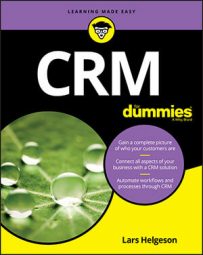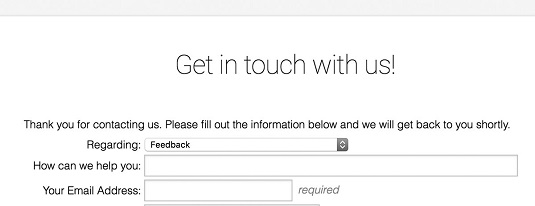Using confirmed and single opt-in forms to gather info for CRM
Confirmed opt-in (also known as double opt-in) forms are most frequently used for newsletters, e-book downloads, and other marketing-related content. After someone gives you an email address, your CRM should automatically send him an email with a link to click — thus confirming the contact is valid.Confirmed opt-ins are the best way to ensure your new contacts are valid, and people who have gone through the confirmation process are 70 percent more likely to engage with you. Efficient engagement drives long-term growth and focuses your team’s time on people who are truly interested in working with you.
Because confirmed opt-ins require the person to take action (clicking a link in the confirmation email), some people won’t finish the confirmation process. In this case, ticketing forms are a good solution for when you want to ensure someone on your team follows up with every lead.
Single opt-in forms don’t require a confirmation email to be sent to the person filling out the form. With single opt-in forms, there is risk that a competitor or person with ill intent could sign up a fake lead or worse, a spamtrap email, that could affect your ability to send email to the inbox. Choose the type of form you put on your website wisely.
Some email marketing and CRM service providers give you the option to send a second confirmation email, which gives you a marked increase in confirmation rates. While the primary objective of each confirmation email is to get the recipient to confirm, these emails can also include more information about your products and services below that call to action in the message.
After someone confirms intent, you can further engage with him using a lead nurturing process. Part of that lead nurturing can be sending each new lead a sequence of emails, spaced out over days or weeks. Series of emails triggered by forms are often called auto-responders, and allow you to send information to your new leads in slower, more digestible chunks. You have many options, including setting CRM activities, sending text messages, and creating opportunities. Be creative and think about how you want to guide new leads from your forms to become customers.Gathering the minimum amount of data for your CRM
Forms work best when you make them as easy as possible to fill out. You have a balance to make when designing your forms. Your natural instinct is to request as much information as possible, so you can target your follow-ups precisely. But people are less likely to fill out your form when you ask them for too much information.The more manual typing you require someone to do, the weaker the incentive to fill out the form. Focus on asking for the minimum amount of information on the first form and then work on getting more data later.
A good CRM includes a form builder that has automatic data appending, so with only an email address, you can get a lot more information without explicitly asking for it.
Optional behavior to enhance user experience
If your form responds to the user’s actions, you have a better chance of getting the user to provide additional information. Reactive forms are driven by logic and are sometimes referred to as branching forms. Improve user engagement with your forms by showing follow-up questions inline. For example, ask what general type of product someone is interested in and then have a more detailed product question appear.Progressive profiling is another technology that may be helpful in creating better engagement with your forms. The server checks whether a cookie is on the user’s computer, indicating the person has been to your site before. If that person is recognized, the server pre-fills the form with information stored in the CRM (such as name and email address). This process can save time in data entry and help the user focus on new information you want to collect.


